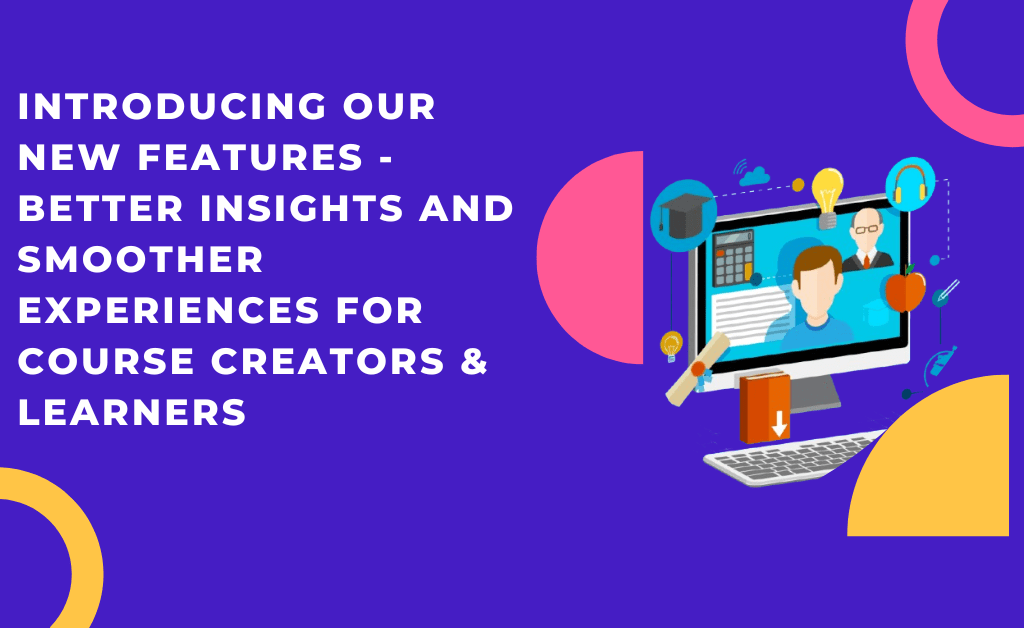In today’s digital era, online courses have become a popular avenue for learning and skill development. Creating online course content can be a rewarding project, regardless of whether you’re an educator, a professional looking to share your expertise, or a business seeking to offer training programs. However, creating an online course requires more than just compiling information and uploading videos. It entails careful planning, creativity, and strategic thinking. In this comprehensive guide, we’ll explore the step-by-step process of creating an online course, from understanding the basics and the costs associated with online cost development to implementing effective strategies for success.

Understanding Online Course Content Creation
Developing an Online course involves designing, creating, and delivering educational content through digital platforms such as websites, learning management systems (LMS), or specialized course platforms. This process encompasses various stages, including curriculum planning, content creation, platform selection, delivery methods, assessment strategies, and ongoing evaluation.
Online courses, in contrast to traditional classroom settings, provide flexibility in terms of time and location, making learning accessible to a diverse audience worldwide.
How To Work on Creating Online Course Content
The foundation of any successful online course is the content. To be able to engage students and provide meaningful learning experiences, it is essential to create engaging and effective content for online courses. Here are some steps to help you develop the best course content:
1. Identifying Learning Objectives:
Before creating any content, it’s crucial to establish clear learning objectives. What do you want your students to achieve by the end of the course? Clear learning objectives serve as a roadmap for course development and guide the creation of content and activities that support those objectives.
2. Understanding Your Audience:

Knowing your target audience is another crucial aspect of online course development. Understanding who your learners are, their motivations, learning preferences, and prior knowledge levels help tailor the course content and delivery methods to best suit their needs effectively.
This involves breaking down the material into manageable chunks or modules, each covering a specific topic or concept. Organizing the content in a logical sequence helps learners build upon their existing knowledge and facilitates understanding and retention.
4. Craft Clear and Concise Learning Materials:
When creating written content, such as lecture notes, slides, or study guides, strive for clarity and conciseness. Information should be presented simply, avoiding jargon or unnecessary complexity that could confuse learners.
5. Develop Engaging Multimedia Content:

Using multimedia elements such as videos, images, audio recordings, and interactive simulations can enhance the learning experience, make complex concepts more digestible, and cater to different learning styles. However, it’s essential to use multimedia judiciously and ensure that it enhances rather than hinders the learning process.
6. Record High-Quality Video Lectures:
If incorporating video lectures, invest in quality recording equipment and software to ensure clear audio and video production. Prepare a script or outline to guide your presentation and maintain a professional and engaging demeanor throughout the recording.
7. Create Interactive Assessments:
Assessments play a crucial role in gauging student understanding and progress. Design a variety of assessment activities, including quizzes, assignments, case studies, and discussions, to evaluate different aspects of learning and provide valuable feedback to students.
8. Foster Active Learning:
Encourage active engagement with the course content by utilizing interactive elements such as polls, quizzes, simulations, and discussion forums. Create opportunities for students to apply their knowledge, solve problems, and collaborate with peers.
9. Ensure Accessibility and Inclusivity:
Make your course content accessible to all learners, including those with disabilities or diverse learning needs. Provide alternative formats for content, and captions for videos, and ensure compatibility with screen readers and other assistive technologies.
10. Iterate and Improve:
Continuously gather feedback from students and monitor their performance to identify areas in need of improvement. Be open to modifying your course content based on feedback and evolving best practices in online education.
By following these guidelines, you can create engaging and effective online course content that captivates and fosters meaningful learning experiences
Cost Considerations in Online Course Development
While the benefits of creating an online course are abundant, it’s essential to understand the financial investment required to develop and maintain a high-quality learning experience. These are some key cost considerations to keep in mind when embarking on the journey of online course development:
1. Content Creation:
The primary cost associated with creating an online course is content creation. This includes the time and resources required to research, design, and produce course materials such as lectures, slides, videos, quizzes, and assignments. Depending on the complexity and scope of the course, content creation costs can vary significantly.
2. Technology and Infrastructure:
Building an online course requires the use of various technological tools and platforms for content delivery, student interaction, and assessment. Costs may include expenses for learning management systems (LMS), video hosting services, website hosting, domain registration, and other software applications needed to support course development and delivery.
3. Multimedia Production:
Incorporating multimedia elements such as videos, animations, graphics, and interactive simulations can enhance the learning experience but may also incur additional production costs. Expenses for video recording equipment, editing software, graphic design services, and royalty fees for stock media assets should be factored into the budget.
4. Professional Services:
Depending on your expertise and resources, you may need to enlist the help of professionals such as instructional designers, videographers, graphic designers, editors, and subject matter experts to assist with course development. Hiring external contractors or collaborating with freelancers can add to the overall cost but may yield higher-quality results.
5. Marketing and Promotion:

Once your course is developed, you’ll need to invest in marketing and promotion to attract students and generate enrollments. Costs may include expenses for advertising, email marketing, social media promotion, search engine optimization (SEO), and affiliate partnerships to reach your target audience effectively.
6. Legal and Compliance:
Consideration should be given to legal and compliance requirements, such as copyright licensing for third-party content, data protection regulations, accessibility standards, and intellectual property rights. Legal consultation or compliance services may be necessary to ensure your course meets industry standards and regulatory obligations.
It’s important to carefully evaluate these online course development cost considerations and develop a realistic budget that aligns with your resources, objectives, and revenue expectations. While online course development can entail significant upfront investments, the potential for long-term returns and scalability makes it a worthwhile endeavor for educators and content creators.
Choosing the Right Platform for Your Online Course
Selecting the right platform for hosting and delivering your online course is a critical decision. Consider the following factors when evaluating potential platforms:
1. Features and Functionality:
Consider the features and functionality offered by different platforms to ensure they align with your course requirements and teaching objectives. Look for platforms that offer a comprehensive set of features, including content management, student tracking, assessment tools, and communication features.
2. Support and Training:

Consider the level of support and training provided by the platform provider, including technical assistance, documentation, and community forums.
3. Ease of Use:
Choose a platform that is intuitive and user-friendly for both instructors and students. A platform with a clean and intuitive interface, customizable layouts, and straightforward navigation enhances the overall user experience and reduces the learning curve for users.
4. Scalability:
Choose a platform that can accommodate the growth of your course and support a large number of students without compromising performance or user experience.
5. Customization Options:
Select a platform that allows you to customize the look and feel of your course to align with your branding and preferences.
Online Course Design Examples
Drawing inspiration from successful online courses can provide valuable insights into effective design principles, engagement strategies, and innovative teaching methods. Here are some inspiring examples of online courses that showcase excellence in course design and delivery:
1. Coursera: “Learning How to Learn”
This popular course, offered by Coursera and created by Dr. Barbara Oakley and Dr. Terrence Sejnowski, introduces learners to the science of effective learning. Through engaging videos, interactive exercises, and practical tips, the course teaches strategies for overcoming procrastination, mastering difficult concepts, and enhancing memory retention. Its accessible and learner-centric approach has garnered widespread acclaim, attracting millions of students worldwide.
2. edX: “Introduction to Computer Science”
Created by Harvard University and offered on the edX platform, this introductory course to computer science provides a comprehensive overview of fundamental concepts and programming principles. Through a combination of lectures, quizzes, coding exercises, and real-world projects, students gain hands-on experience in software development and problem-solving. The course’s structured approach and emphasis on practical application make it accessible to learners of all backgrounds and skill levels.
3. Udemy: “The Complete Web Developer Course 3.0”
Created by instructor Rob Percival, this popular course on Udemy offers comprehensive training in web development, covering HTML, CSS, JavaScript, and various programming languages. Through video lectures, coding exercises, and hands-on projects, students learn essential skills for building websites and web applications. The course’s practical approach and real-world examples make it a favorite among aspiring web developers seeking to launch their careers.
These examples illustrate the diverse approaches and strategies employed by successful online educators to create engaging and effective learning experiences. By studying these examples and incorporating best practices into your course design, you can enhance the quality and impact of your online educational offerings.
Ensuring Accessibility and Inclusivity in Online Learning
Accessibility and inclusivity are essential principles in online education, ensuring all learners have equal access to educational opportunities. By adhering to web accessibility standards, providing alternative formats for materials, and fostering inclusive communication, educators create a welcoming environment for diverse learners. Captioning videos, providing descriptive alt text for images, and offering flexible assessment options further enhance accessibility. Prioritizing inclusivity and seeking feedback from diverse students fosters an environment where everyone feels valued and supported.
Marketing and Promoting Your Online Course
Effective marketing and promotion are essential for attracting students to your online course. Implement the following strategies to promote your course effectively:
1. Identify Your Target Audience:
Clearly define your target audience and tailor your marketing messages to address their needs, interests, and pain points.
2. Create Compelling Content:
Develop engaging content such as blog posts, videos, infographics, and case studies to showcase the value of your course and attract potential students.
3. Utilize Multiple Channels:
Use a combination of online and offline marketing channels to reach a wider audience, including social media, email marketing, search engine optimization (SEO), and networking events.
4. Optimize Your Landing Page:
Ensure your course page is visually appealing, informative, and easy to navigate to drive conversions.
5. Collect Testimonials:
Share success stories from satisfied students to build credibility and inspire confidence in potential learners.
6. Offer Promotions and Discounts:
Generate excitement and urgency by offering limited-time promotions, early bird discounts, or special incentives for early enrolment.
Measuring Success and Iterating Your Course
Once your online course is live, it’s important to track its performance and make necessary adjustments to improve learner outcomes. Use the following metrics to measure the success of your course:
1. Student Engagement:
Monitor student engagement metrics such as course completion rates, time spent on tasks, and participation in discussions and activities.
2. Revenue and ROI:

Track financial metrics such as course sales, revenue generated, and return on investment (ROI) to assess the profitability and effectiveness of your course.
By analyzing these metrics and gathering feedback from students, you can identify areas for improvement and make necessary adjustments to enhance the overall quality and effectiveness of your course.
3. Assessment Results:
Analyze student performance on quizzes, assignments, and assessments to identify areas of strength and weakness in your course content and delivery.
4. Feedback and Reviews:
Solicit feedback from students through surveys, course evaluations, and reviews to gather insights into their learning experiences and identify areas for improvement.
Conclusion
Developing an online course is a rewarding endeavor that requires careful planning, creativity, and dedication. By following best practices and incorporating innovative strategies, you can create engaging and effective course content that resonates with your audience and delivers meaningful learning experiences.
As you embark on your online course development journey, consider leveraging Owwlish—a comprehensive platform designed to support educators and content creators every step of the way. With Owwlish, you can easily create, market, and deliver online courses to a global audience.
Owwlish offers a user-friendly interface, robust features, and dedicated support to help you bring your educational vision to life. Explore Owwlish and discover how our platform can empower you to create impactful online courses that inspire learning, foster engagement, and drive success. From course creation and marketing to delivery and analytics, Owwlish has you covered every step of the way.
Start your journey with Owwlish today and unlock the potential of online education!






